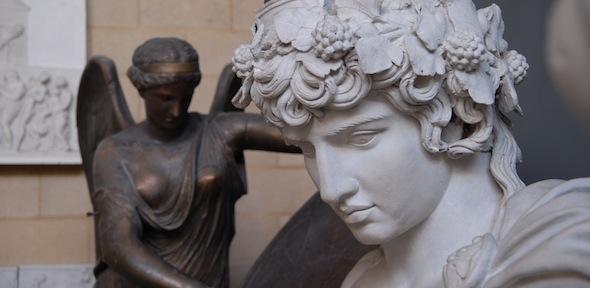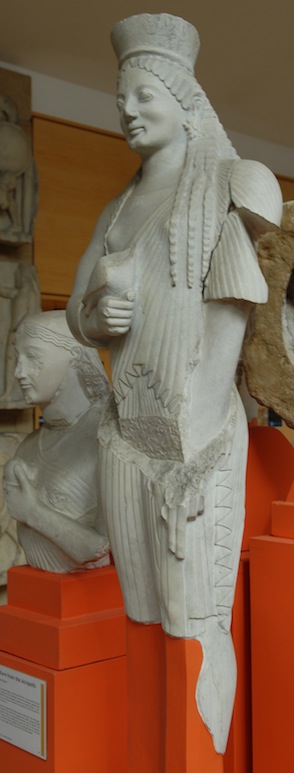
Why Casts?
A cast collection is, perhaps, a rather odd basis for a museum. After all, nothing in our Cast Gallery is original. Plaster casts lack the authenticity of ancient marbles and bronzes which are over two thousand years old; their surfaces, at least in our collection, are not marked by the passage of time but by special treatments designed to make them look more like stone and metal. Every cast is a copy, a replica, a fake even. Plaster casts just aren't real – are they?
So, what's the point? Why do we even have a cast collection in this day and age?
The advantages of replicas
In many ways, our collection of plaster casts brings to life Greek and Roman sculpture in unparalleled ways. Photographs are useful, but they are two-dimensional. In contrast, our casts are direct copies of the ancient objects they model, meaning they are the same size and they occupy space in the same way as the original. Looking up at the Sounion Kouros is not quite the same as looking at a picture in a book about ancient Greek art.
At the same time, our Cast Gallery brings together examples of classical sculpture which are today scattered in museums and collections across the world – it simply is not possible to view the originals side-by-side in the same way that the casts can be seen together in the Gallery. This makes the cast collection ideal for teaching; students can go beyond book-learning by comparing and contrasting the statues themselves.

The originals of some of the sculptures on display together in the Cast Gallery are, in fact, divorced from each other in their modern-day museum context. The three-quarter-sized Amazon, Giant, Gaul and Persians of the impressive monument set up by the Hellenstic king Attallos 1st of Pergamon on the Athenian acropolis are today in several different collections, but can be viewed together in Bay G. The two halves of the Lyons Kore (pictured) are, in fact, in two separate museums – but they are reunited in Bay A.
Plaster casts can also prove useful in other ways. In the case of our painted Peplos Kore, for instance, the acquisition of a replica offered the chance to explore an aspect of Greek sculpture so often lost to us today – their bright colours. Sometimes, casts preserve artefacts at risk of damage: our cast of the Lysikrates Monument, for instance, captures the frieze before it was eroded badly by the elements. It must have been almost complete when it was discovered in the 18th century, but some of the figures visible on the cast are now entirely lost on the monument itself.
Replicas as historical objects
Just as importantly, the majority of the casts in the collection are historical objects in their own right. Most date back to the late nineteenth century and several from much earlier. They stand testament to the ways in which large private houses were decorated, to the cultural capital acquired by studying the Classics and going on a Grand Tour around Italy (and, later, Greece), and to the ways in which archaeological discoveries were disseminated and taught.
In these ways, plaster casts have their own story to tell about the history of collecting – and about the rise and fall of prevailing tastes. Plaster casts were once a primary vehicle for an art education, but when the classical ideals they represent fell out of fashion, so too did casts. Many cast collections were broken up, destroyed or, at best, relegated to basements in the course of the 1960s and 1970s; many museums could no longer see a use for them. And for this reason, we are very lucky to have our plaster casts today.







